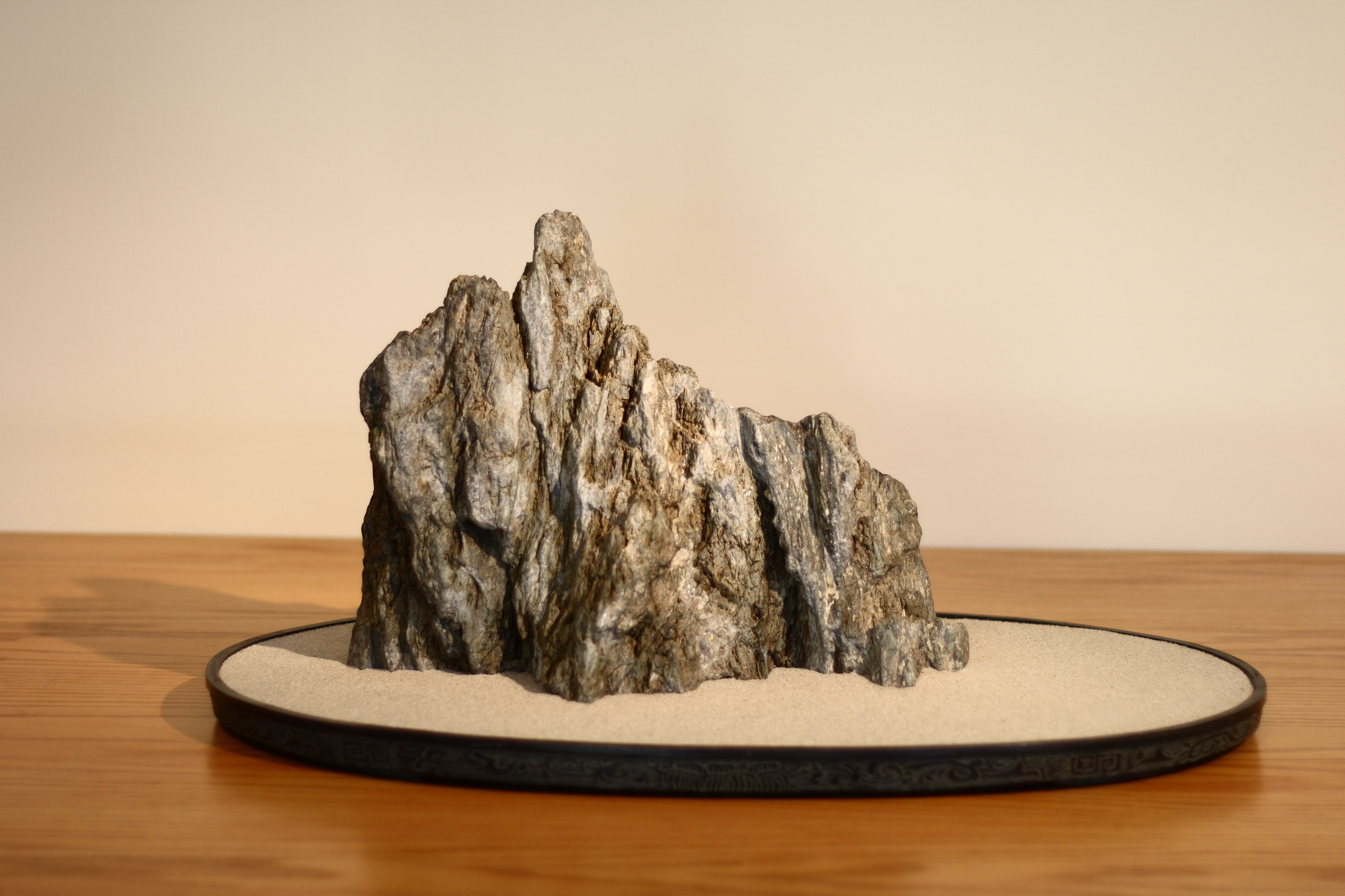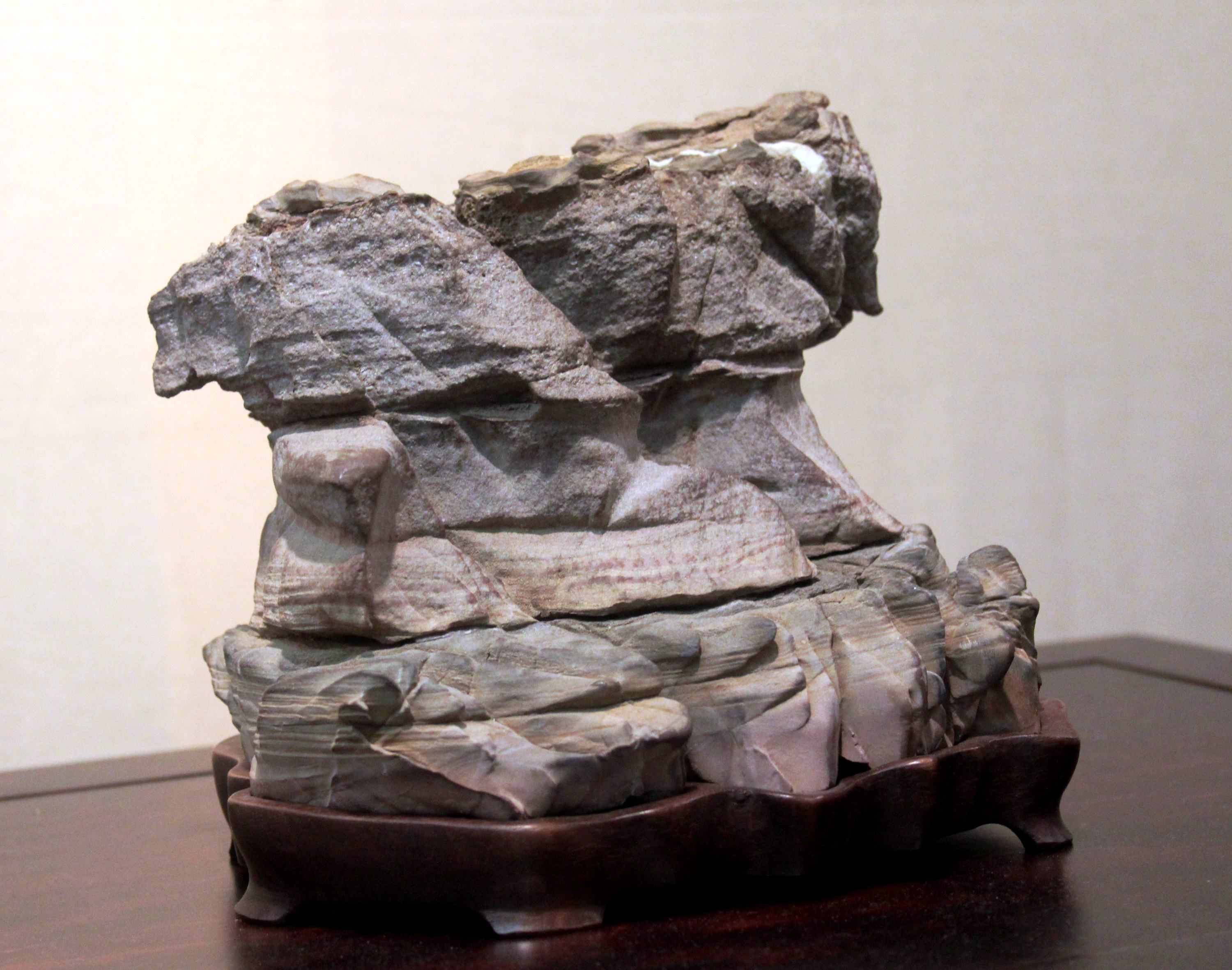Suiseki on:
[Wikipedia]
[Google]
[Amazon]

 In traditional Japanese culture, are small naturally occurring or shaped
In traditional Japanese culture, are small naturally occurring or shaped
''Bonsai Master Class,'' p. 244
Nippon Suiseki Association
"Viewing Stones" at National Bonsai Foundation
Arts in Japan Japanese sculpture Rock art in Asia Japanese aesthetics {{Japan-art-stub

 In traditional Japanese culture, are small naturally occurring or shaped
In traditional Japanese culture, are small naturally occurring or shaped rocks
In geology, rock (or stone) is any naturally occurring solid mass or aggregate of minerals or mineraloid matter. It is categorized by the minerals included, its chemical composition, and the way in which it is formed. Rocks form the Earth's ...
which are appreciated for their aesthetic or decorative value. They are similar to Chinese scholar's rocks
''Gongshi'' (), also known as scholar's rocks, are naturally occurring or shaped rocks which are traditionally appreciated by Chinese scholars.Metropolitan Museum of Art "The World of Scholars' Rocks Gardens, Studios, and Paintings" retrieved 2 ...
.Cousins, Craig. (2006)''Bonsai Master Class,'' p. 244
History
Chinese scholar's rocks called ''gongshi
''Gongshi'' (), also known as scholar's rocks, are naturally occurring or shaped rocks which are traditionally appreciated by Chinese scholars.Metropolitan Museum of Art "The World of Scholars' Rocks Gardens, Studios, and Paintings" retrieved ...
'' influenced the development of ''suiseki'' in Japan. The history of ''suiseki'' in Japan begins during the reign of Empress Suiko
(554 – 15 April 628) was the 33rd monarch of Japan, Imperial Household Agency (''Kunaichō'') 推古天皇 (33)/ref> according to the traditional order of succession.
Suiko reigned from 593 until her death in 628.
In the history of Japan ...
. The small objects were brought to Japan as gifts from the Chinese Imperial court.
''Suiseki'' are usually presented in two different ways:
*The stone is provided with a wooden base (''daiza'').
*The stone is placed in a waterproof tray or bowl of ceramic (''suiban'') or bronze (''doban'').
These stones are not just any stones which can be found in nature; they must be expressive stones and have a special shape, color and texture to be categorized as ''suiseki''. There is a distinction between landscape and object stones. The former reflect landscapes such as mountains, lakes or rivers, while other stones have object shapes that resemble animals or sculptures.
The stones are of natural origin and are found in rivers, oceans and karst areas. They are not allowed to be reshaped. An exception is the cutting of stones to have a flat base, so they can be placed stably on a ''daiza'', ''suiban'' or ''doban'', to be displayed properly. However, this diminishes their value in the eyes of some enthusiasts.
Evaluation
The evaluation of ''suiseki'' recognizes subtlety of color, shape, markings and surface. According to in ,It is not a silly thing at all to enjoy a stone in a tray. I see the whole world in a tiny stone. Some objects in this world are huge, and others are small, and they come in all shapes, but they are not that different when you look at their essence.Rivera, Felix G. (1997)Popular types of ''suiseki'' suggest a mountain, a waterfall, an island, a thatched hut or an animal.
''Suiseki: The Japanese Art of Miniature Landscape Stones,'' p. 40
citing .
See also
*Chinese scholar's rocks
''Gongshi'' (), also known as scholar's rocks, are naturally occurring or shaped rocks which are traditionally appreciated by Chinese scholars.Metropolitan Museum of Art "The World of Scholars' Rocks Gardens, Studios, and Paintings" retrieved 2 ...
*'' Suseok'' in Korea
* '' Bonseki''
References
External links
Nippon Suiseki Association
"Viewing Stones" at National Bonsai Foundation
Arts in Japan Japanese sculpture Rock art in Asia Japanese aesthetics {{Japan-art-stub